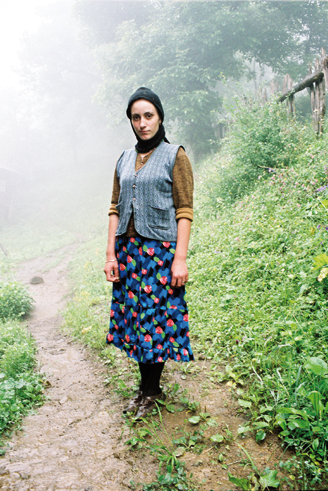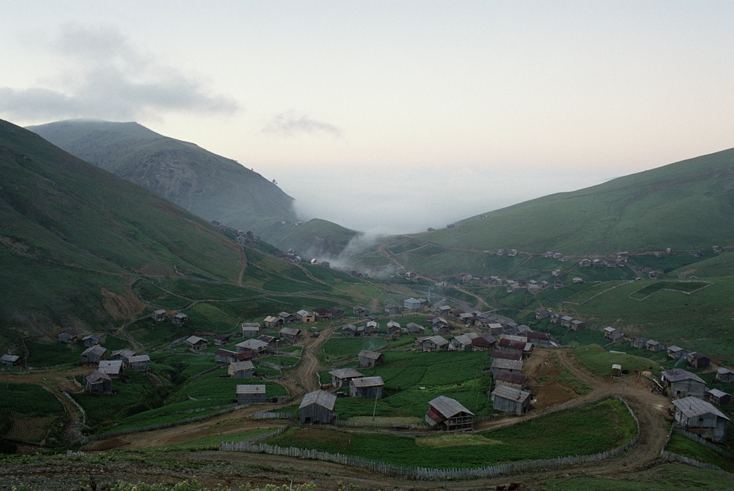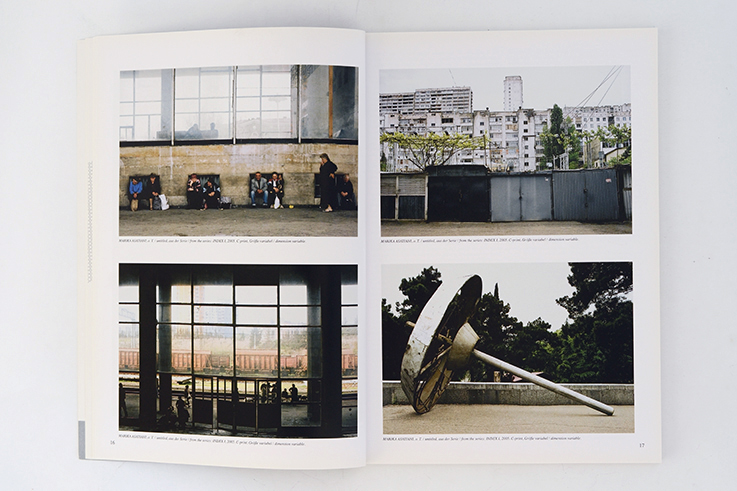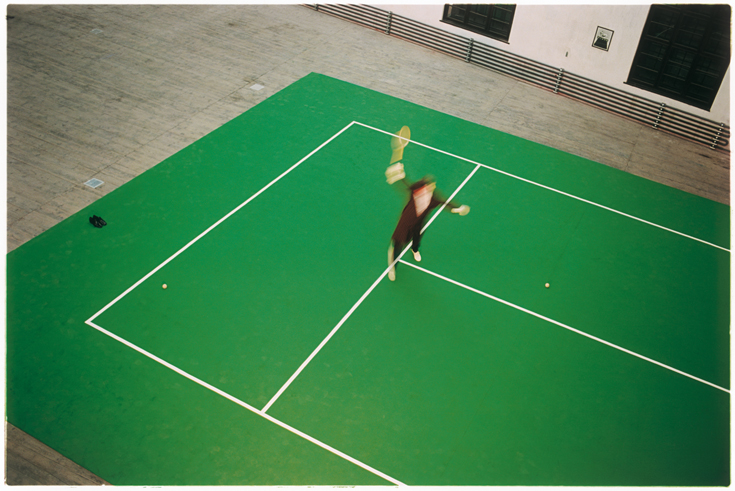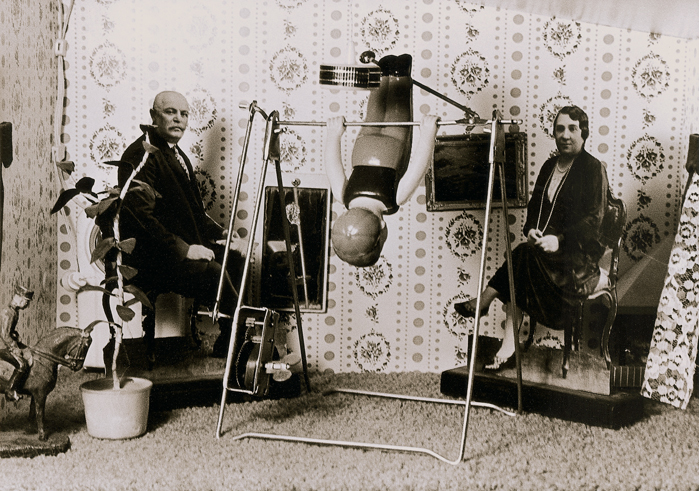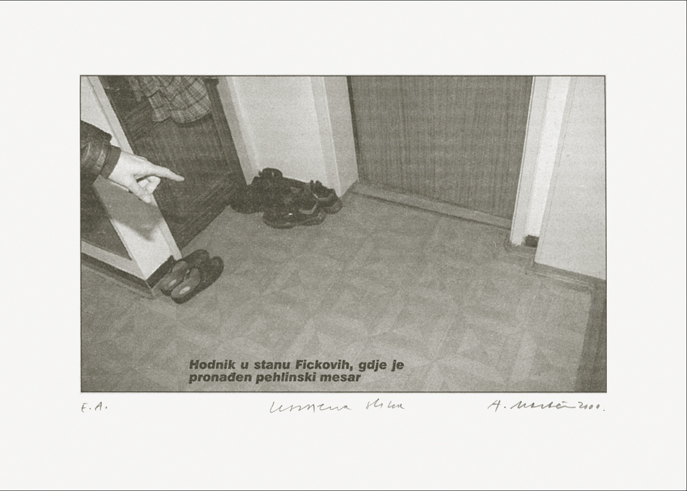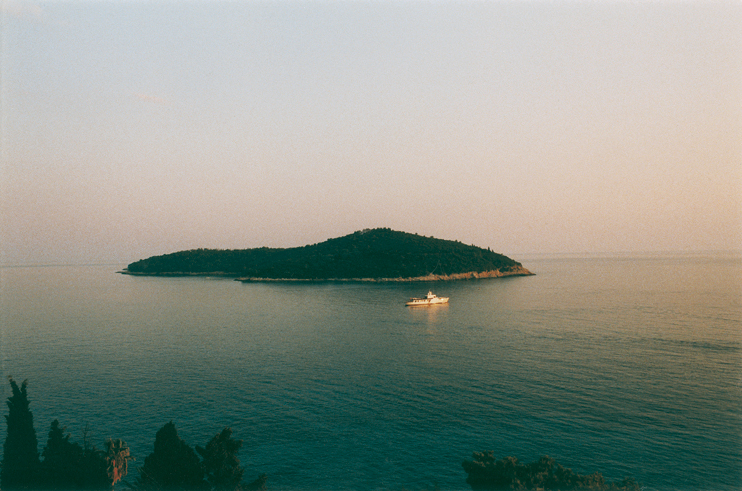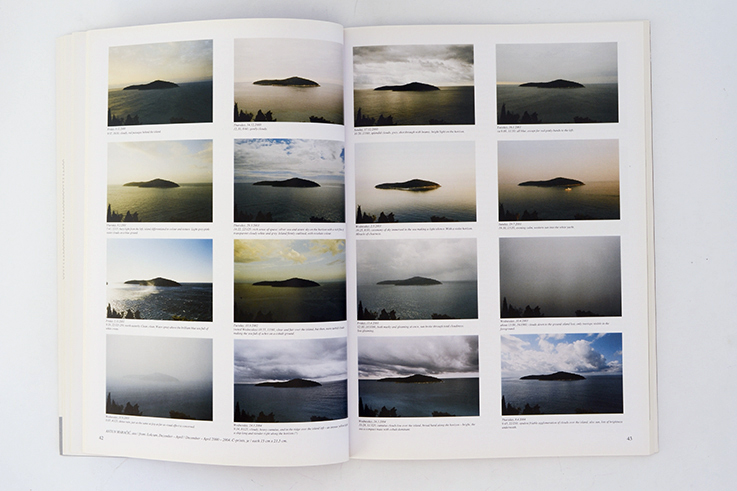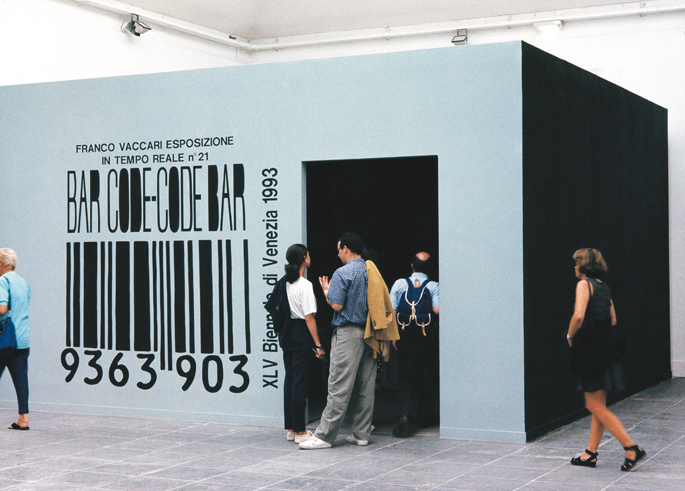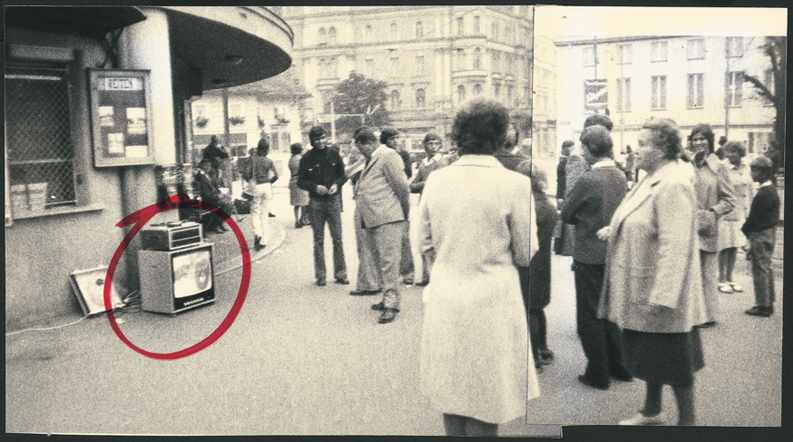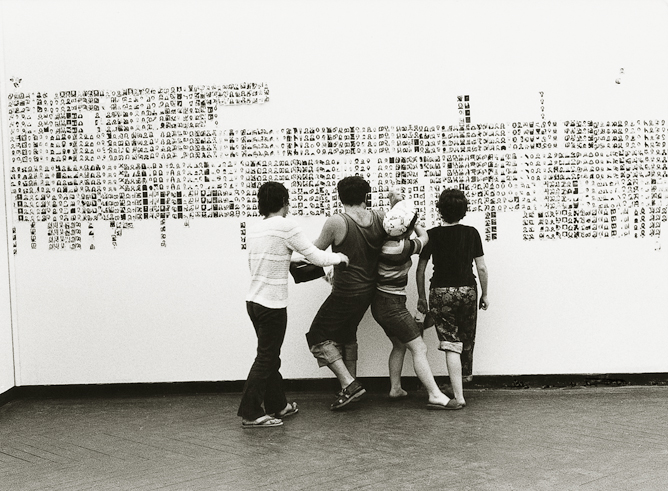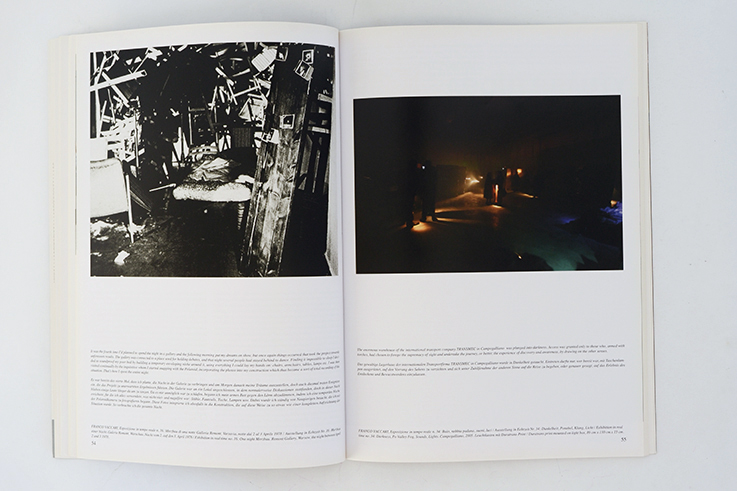Camera Austria International
99 | 2007
- DANIEL BAUMANN
Marika Asatiani - MARIKA ASATIANI
- CHRISTINE FRISINGHELLI
Peter Dressler: Objects, Signs, Commodities - PETER DRESSLER
- SANDRA KRIŽIĆ ROBAN
Antun Maračić : To See = To Be - ANTUN MARAČIĆ
- ANTONELLO FRONGIA
Franco Vaccari - FRANCO VACCARI
- RAINER BELLENBAUM
Change of Dispositif II

Preface
At our Symposium on Photography back in 1983 we already invited the Italian concept artist, theorist and educator Franco Vaccari to discuss the technological conditions of the photography medium and its language defined by these conditions. His contribution on “Photography and the technological unconscious” (published in Camera Austria No. 15–16/1984) also covered the essential foundations of his own artistic work. Vaccari’s extensive Ouvre was recently the focus of a retrospective at Spazio Oberdan in Milan, and a current publication of his collected writings is also bringing the discussion back to his work. In view of this occasion and because we see his work as an important, internationally relevant contribution to the media discussion, we are devoting an extensive contribution to him in our current issue, with an introduction by Antonello Frongia. The piece focuses on his “Exhibitions in real time” project that he has been developing for several years and whose site-specific manifestations range from a contribution to the Venice Biennial in 1972 to an enactment for the duration of one night in a carrier company’s warehouse in Campogalleano, Modena in 2004. Vaccari’s work, that Frongia describes as dialectical art, is characterised by a space-based practice; in his works he deals with the possibilities of intervention and participation, always reflecting on and critically scrutinising the conditions of production and reception of contemporary art.
Read more →Camera Austria International 99 | 2007
Preface
At our Symposium on Photography back in 1983 we already invited the Italian concept artist, theorist and educator Franco Vaccari to discuss the technological conditions of the photography medium and its language defined by these conditions. His contribution on “Photography and the technological unconscious” (published in Camera Austria No. 15–16/1984) also covered the essential foundations of his own artistic work. Vaccari’s extensive Ouvre was recently the focus of a retrospective at Spazio Oberdan in Milan, and a current publication of his collected writings is also bringing the discussion back to his work. In view of this occasion and because we see his work as an important, internationally relevant contribution to the media discussion, we are devoting an extensive contribution to him in our current issue, with an introduction by Antonello Frongia. The piece focuses on his “Exhibitions in real time” project that he has been developing for several years and whose site-specific manifestations range from a contribution to the Venice Biennial in 1972 to an enactment for the duration of one night in a carrier company’s warehouse in Campogalleano, Modena in 2004. Vaccari’s work, that Frongia describes as dialectical art, is characterised by a space-based practice; in his works he deals with the possibilities of intervention and participation, always reflecting on and critically scrutinising the conditions of production and reception of contemporary art.
The Croatian artist Antun Maracic first approached the public in the mid-1970s, and his work also allows links to the trends of concept art at that time, as Sandra Krizic Roban elaborates in her contribution. He too is not only active as an artist, but also as an art critic and head of the museum of modern art in Dubrovnik, as well as an educator and one of the key figures in Croatia’s art scene. From the beginnings of his exploration of analytical painting to today – where he mainly expresses himself through the photography medium – “processuality, demystification of the artistic act, seriality, absence of narrative contents, and an interest in the position of the individual” (Krizic Roban) are characteristic of his works. But in view of the experience of war at the start of the 1990s we must add another dimension to his work, that sets – indeed, must set – Maracic apart from other fellow artists entrenched in the Western European context: a dimension that presents the category of fear and existential disgust – as Krizic Roban describes it – as a dimension of nothingness. While the redefinition and expansion of the conceptual apparatus underlying historical and contemporary concept art, for instance on the basis of the concept of Romanticism, is currently experiencing a certain boom, it would seem appropriate at this point to bring the category of fear and nothingness in Antun Maracic’s work into the current discussion.
The work of Austrian artist Peter Dressler can also be linked to Franco Vaccari, whose photography we not only showcased last year in a retrospective entitled “Tangible beauty” but who also already contributed a lecture on the subject of “Image : Text” at the Symposium on Photography in the 1980s. There, Dressler described his mode of working as an “unspectacular search for the imagery of my wanderings through the world of things”, and it suggests itself to “read” the picture tableaux, that have been characteristic of his approach to work since the early seventies, as texts. A comparison of his methodology with film montage would be a possible way of approaching his works – in the aforementioned lecture he talked about them as a “system […] that might be compared to a stopped, fixed film, a film disassembled into static scenes”.
In addition to serial work – to which Maracic is also committed – and not only in terms of the closeness in time of the beginnings of their artistic work, this issue reveals other connections between the works of the three artists presented here: On the one hand, their investigation of the specific possibilities of the media that they use appear to be characteristic in the conceptual approach of their works. At the same time, above and beyond their own work, this activity also comprises an educational practice in view of their commitment to the theoretical, art-critical and historical debate of the photography medium. Finally, we would like to present the young Georgian artist Marika Asatiani, whose “Achara Untitled” project we already brought to Graz, and thus for the first time into a West-European context, for the “You are here” group exhibition in spring. Against the background of the (historical and contemporary) photographic projects on the “stylisation of everyday life”, Daniel Baumann provides an introduction to her work. Asatiani uses a global rhetoric, that she deploys to draw our attention to specific local conditions, for her photo series on Georgia. “She uses it as a way of maintaining and uncovering the photographer’s distance to his object and in order to characterise her perspective. She identifies the two spaces as independent, that is, these photographs use the stylisation to create a space, not to take possession of it. It is a gesture of respect that not least reveals how a globalised language can be appropriated so as to reinterpret and utilise it” (Baumann).
In this issue, Rainer Bellenbaum publishes the second instalment of his four-part column in which he deals with the variable dispositifs of the cinema and exhibition space and with the associated artistic, dramatic and narrative practices. By way of example, he provides an introduction to the presentation modes of the artists Andreas Fogarasi and Yael Bartana at various major exhibitions, e.g. this year’s Venice Biennial (at which Andreas Fogarasi designed the Hungarian pavilion) and documenta 12 (Yael Bartana), combined with a critical glance at the respective exhibition practices and the associated attempts at differentiation of the above-mentioned artists. Our exhibition reviews section also features detailed reviews of the two latter major exhibitions by Kirsty Bell and Denise Robinson.
We would also like to take this opportunity of announcing our next issue. After twenty-seven years of continuous editorial and curatorial work, we are now looking forward (with some astonishment) to the publication of the 100th issue of our magazine Camera Austria International. We will not be celebrating this event with a conventional anniversary issue but rather with an issue devoted to one main theme: In co-operation with the Market Photo Workshop – the photography institution in Johannesburg founded by David Goldblatt at the end of the 1980s – we will be creating this issue and an exhibition showcasing the photography of young students and graduates of this unique school. This ambitious socio-political project has not only produced excellent artistic and journalistic documentary works but also offers young people attending the Market Photo Workshop their first real opportunity of training in a country that is undergoing radical transformations. We are very pleased to use our 100th issue to present a project that is forward-looking and dedicated to our ongoing scrutiny of the social uses of photography.
Christine Frisinghelli
Entries
Forum
VESNA PAVLOVIC
RENATA POLJAK
MARíA KJARTANSDOTTIR
MATHIAS LINDEN
NIKOLAUS WEITZER
LUCIA NIMCOVá
MAR COSTA HUGUET
MARLA SWEENEY
Exhibitions
Shooting Back
MANISHA JOTHADY
Bit International – [Nove] Tendencije: Computer and Visual Research. Zagreb 1961 – 1973
SANDRA KRIZIC ROBAN
WACK! Art and the Feminist Revolution
SANDRA WAGNER
Dateline: Israel. New Photography and Video Art
De L’Europe. A Composite Portrait of a Continent
YOANN VAN PARYS
CINDY SHERMAN
CAROLIN FöRSTER
Documenta 12
DENISE ROBINSON
Blicke, Passanten. 1930 bis heute – Aus der Fotosammlung der Albertina
WALTER SEIDL
What does the Jellyfish Want?
STEFANIE LOH
52. Biennale di Venezia: Think with the Senses – Feel with the Mind. Art in the Present Tense
KIRSTY BELL
Conceptual Photography 1964 – 1989
RACHEL BAUM
Books
Seiichi Furuya: Mémoires 1983
MARIE RöBL
Shawn Mortensen: Out of Mind
CARLO MCCORMICK
Joan Colom: Raval
JORGE RIBALTA
Andreas Reiter Raabe: Pure Paint
JOHN ZINSSER
Christian Wachter: Impressions D’Afrique
MICHAEL PONSTINGL
Paul Kranzler: Tom
RüDIGER WISCHENBART
Imprint
Publisher: Manfred Willmann. Owner: Verein CAMERA AUSTRIA, Labor für Fotografie und Theorie.
All: Lendkai 1, A-8020 Graz.
Editors Graz: Christine Frisinghelli, Tanja Gassler, Simone Kocsar
Editor Berlin: Maren Lübbke-Tidow
Copy editing: Marie Röbl


